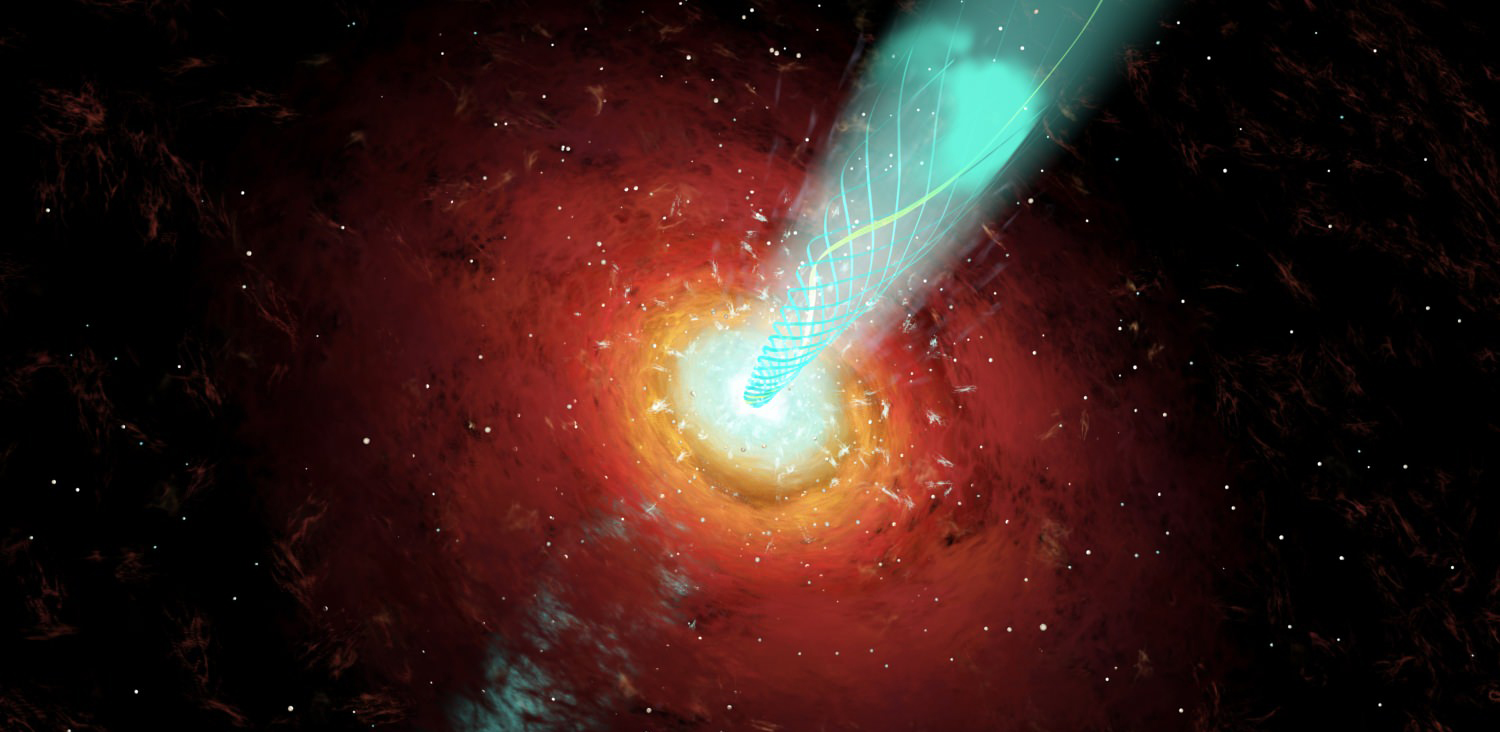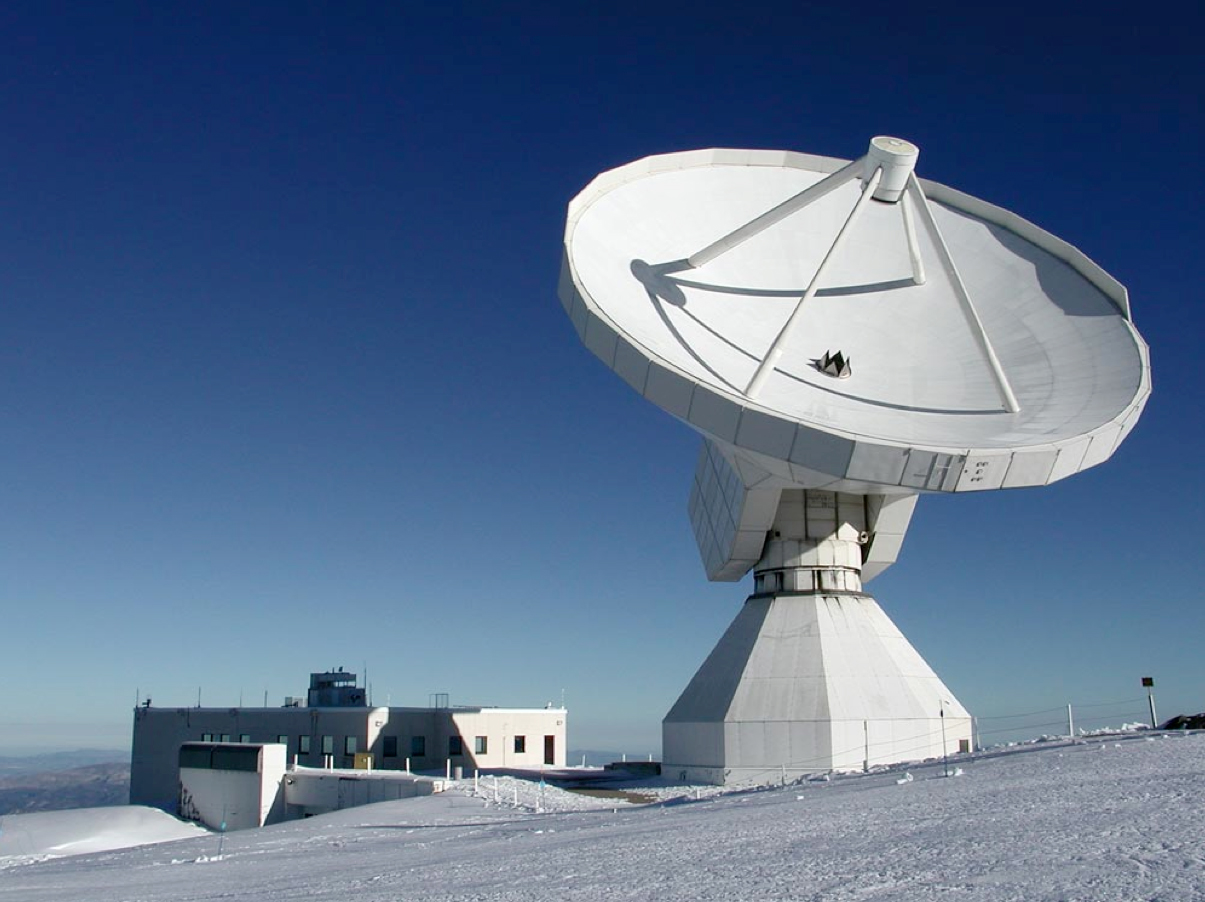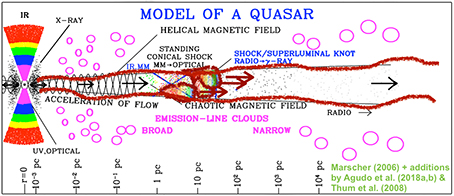POLAMI: a project to unravel the secrets of the supermassive black holes at the center of the galaxies
Coordinated by the IAA, it brings together more than twenty researchers from five countries and is the first project of its kind: a long term study of the active galactic nuclei in polarized light
Active galactic nuclei (AGNs) are the most energetic objects of the universe. They can continuously emit more than a hundred times the energy of all the stars of a galaxy like ours. This is attributed to the existence of a supermassive black hole surrounded by a disc of matter that feeds it, and from which two jets emerge, formed with particles travelling nearly at the speed of light. The POLAMI project, launched in 2006, publishes the results of the first long-term study in polarized light at millimeter wavelengths of a sample of AGNs, which will allow addressing some of the uncertainties about these objects.
"Among these uncertainties are several related to the jets of particles released by the AGN, and refer us to their innermost and less explored regions - says Iván Agudo, a researcher at the Institute of Astrophysics of Andalusia (IAA-CSIC) who leads the project POLAMI- We do not know, for example, the composition of the material of the jets or which model best explains the processes that underlie its formation, acceleration and collimation; one of the ways to answer these questions is to study these objects in polarized millimeter light".

The light we receive from the universe is the result of the disordered superposition of many electromagnetic waves that vibrate randomly, that is, unpolarized light. Under some circumstances, the light of some stars vibrates preferably in a plane, which gives rise to linearly polarized light; in others, the light draws a trajectory similar to that of a spring, giving rise to circular polarization.
The type of polarization and its variability in time is related, in the case of the inner regions of the AGNs, to the dynamics and evolution of the plasma that forms the jets, so that a detailed monitoring of a sample of objects during periods that range from weeks to several years can provide answers to open questions.
POLAMI (Polarimetric Monitoring of AGNs in Millimeter Waves) seeks to cover the gaps in the available data, which hardly cover the study of the circular polarization of the light of the AGNs or the evolution of the jets in timescales shorter than months. These objects have not been intensively explored in short millimeter waves either.
The sample of POLAMI includes thirty-seven active galactic nuclei, most of them blazars, a type of AGN especially luminous because its orientation allows us to see the jets almost face-on. The observations were carried out from the thirty meter radiotelescope of the Institute of Millimeter Radioastronomy (IRAM) located in Sierra Nevada (Granada), and were scheduled in sessions of four to six hours and distributed over a total of eight years.

"The program started in 2006 being the small project of a group of researchers at the IAA and IRAM, but in these twelve years it has become a consolidated international collaboration composed of more than twenty researchers in six centers in five countries -says Iván Agudo (IAA-CSIC)-. The program has already participated in many publications, but the results we publish now represent a milestone for the project, since they are the first ones that analyze only the POLAMI data as a whole".

"Polarization studies are among the most technically demanding in the radiotelescope, but they have paid off," says Clemens Thum, IRAM researcher and co-principal investigator of the project, "The results reveal for the first time the presence of circularly polarized light in the whole sample of AGNs, and its detection in short millimeter waves limits the mechanisms that can produce it".
These mechanisms are related to the configuration of the AGN itself: the disk of matter that feeds the black hole is rotating, and the magnetic field lines form a helical structure that confines and accelerates the particles of the jets. "The data suggest that the circular polarization is produced by the conversion of the linear polarization in the helical structure of the jets," says Thum (IRAM).
The results also show variations in the circular polarization of light, both in short and long term, whose causes are being studied, and also point to the existence of several emission regions along the jets. "We believe that the results of our program will be an important starting point to open new fields of research for the knowledge of the jets in active galactic nuclei, specifically regarding to the properties and composition of the plasma that forms them in their regions near the central supermassive black hole", concludes Iván Agudo (IAA-CSIC).
I. Agudo et al. "POLAMI: Polarimetric Monitoring of AGN at Millimetre Wavelengths – I. The programme, calibration and calibrator data products". Monthly Notices of the Royal Astronomical Society, 474, 1427–1435 (2018) DOI: https://doi.org/10.1093/mnras/stx2435
C. Thum et al. "POLAMI: Polarimetric Monitoring of Active Galactic Nuclei at Millimetre Wavelengths – II. Widespread circular polarization". Monthly Notices of the Royal Astronomical Society, 473, 2506–2520 DOI: https://doi.org/10.1093/mnras/stx2436
I. Agudo et al. "POLAMI: Polarimetric Monitoring of Active Galactic Nuclei at Millimetre Wavelengths – III. Characterization of total flux density and polarization variability of relativistic jets". Monthly Notices of the Royal Astronomical Society, 473, 1850–1867. DOI: https://doi.org/10.1093/mnras/stx2437
Instituto de Astrofísica de Andalucía (IAA-CSIC)
Unidad de Divulgación y Comunicación
Silbia López de Lacalle - sll[arroba]iaa.es - 958230532
http://www.iaa.es
http://divulgacion.iaa.es
